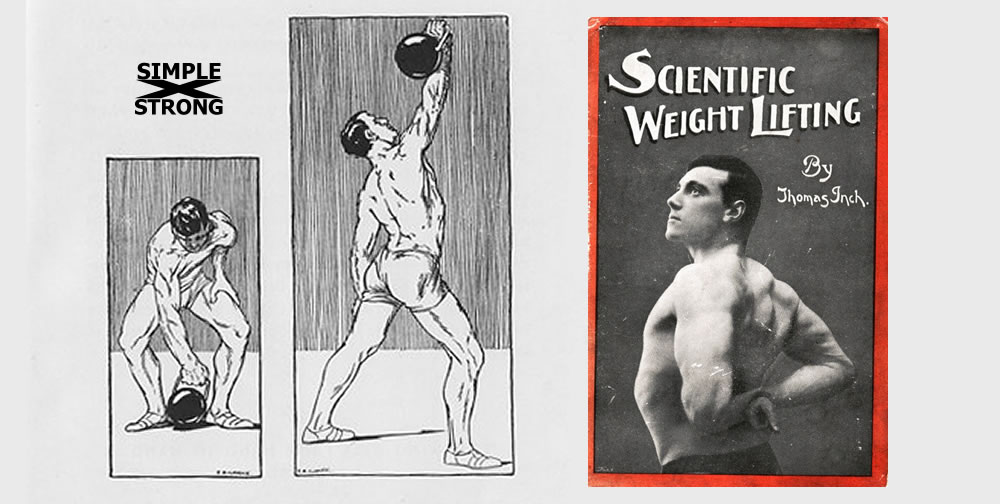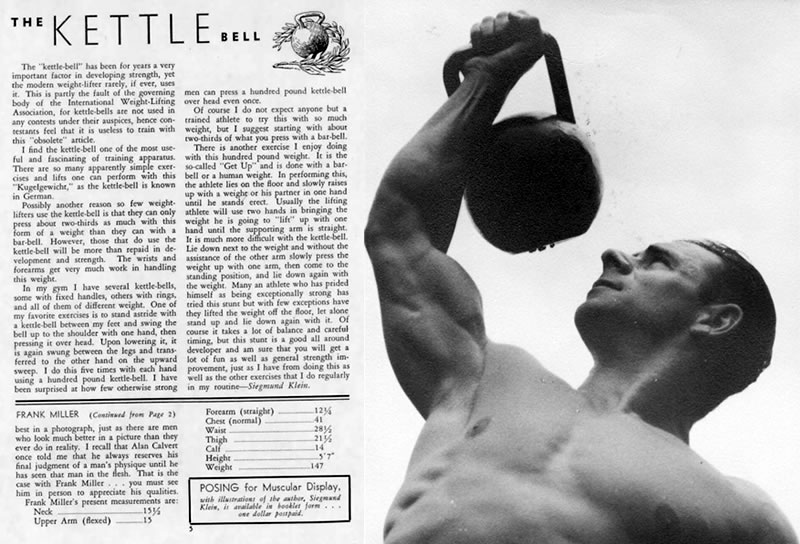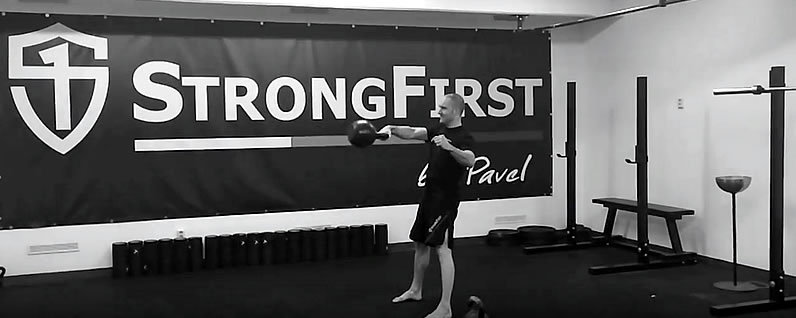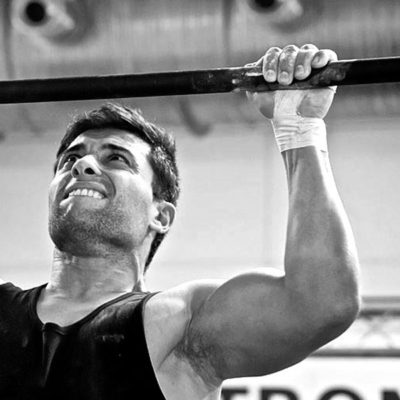
In this lift what is known as a “kettle bell” should be used, with fixed, not swinging or loose, handle. The instructions below may be used for either, however.
The bell should be placed between the feet, with handle parallel with feet, not longways on as shown in the sketch.
![Chest-Expanding and Shoulder Developing Exercise With a Pair of Kettle-Bells [1924]](https://simplexstrong.com/wp-content/uploads/2017/05/kettlebell-see-saw-press.jpg)
Curl the weights to the shoulders, then turn the wrists so that the weights rest on the back of forearms, as shown in Figure 1. Push right hand aloft, and then, as you lower the right hand, push the left hand aloft. KEEP BOTH ARMS WORKING at the SAME time, but in opposite directions.

At Dresden on 25th July, 1920, Görner lifted the enormous weight of 430 lb. (a little more than 195 kilos) overhead in the Two Hands ‘Anyhow’ style, performing the feats with four kettleweights in the following manner. He first of all swung with the right hand two kettleweights, one weighing 110¼ lb. and the other 99¼ lb.

The “kettle-bell” has been for years a very important factor in developing strength, yet the modern weight-lifter rarely, if ever, uses it. This is partly the fault of the governing body of the International Weight-Lifting Association, for kettle-bells are not used in any contests under their auspices, hence contestants feel that it is useless to train with this “obsolete” article.

Most people do the swing wrong because they think it is a 2 count movement:
1 – down (= evading to soon, which leads to all kind of troubles like the weight pulling you forward, ending too low between the legs etc.)
2 – up (= lifting with the hands)
Think of the swing as 4 count movement (let’s start form the top):

![Chest-Expanding and Shoulder Developing Exercise With a Pair of Kettle-Bells [1924]](https://simplexstrong.com/wp-content/uploads/2017/05/kettlebell-see-saw-press.jpg)
















